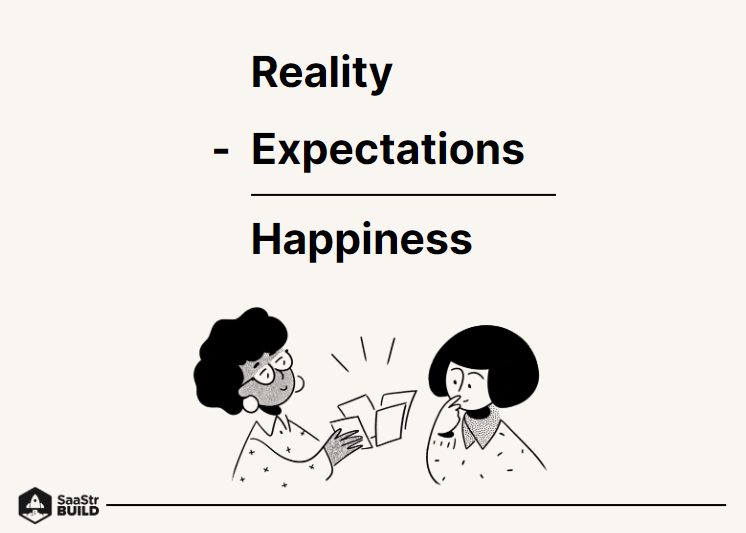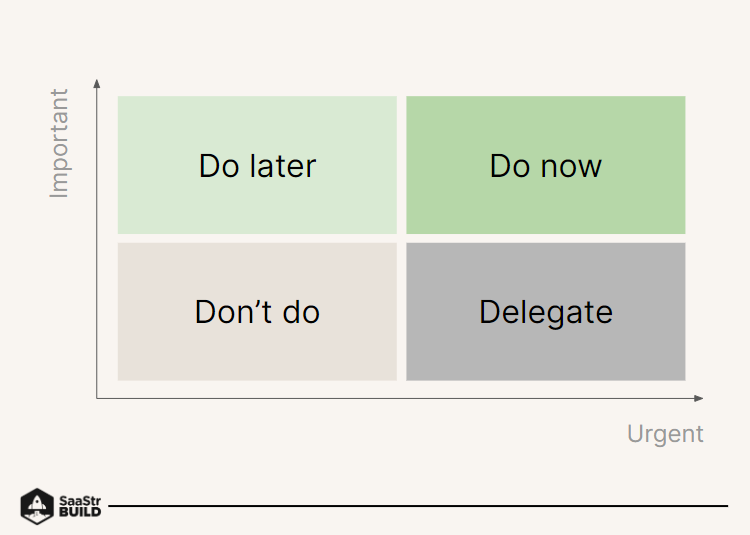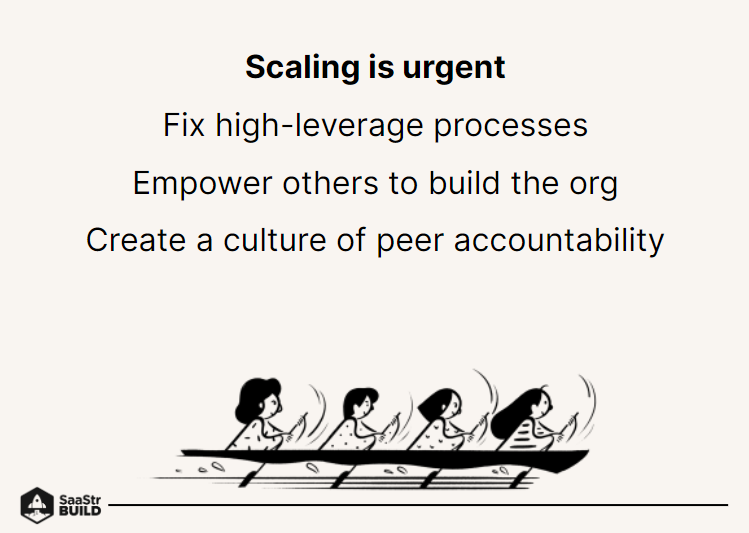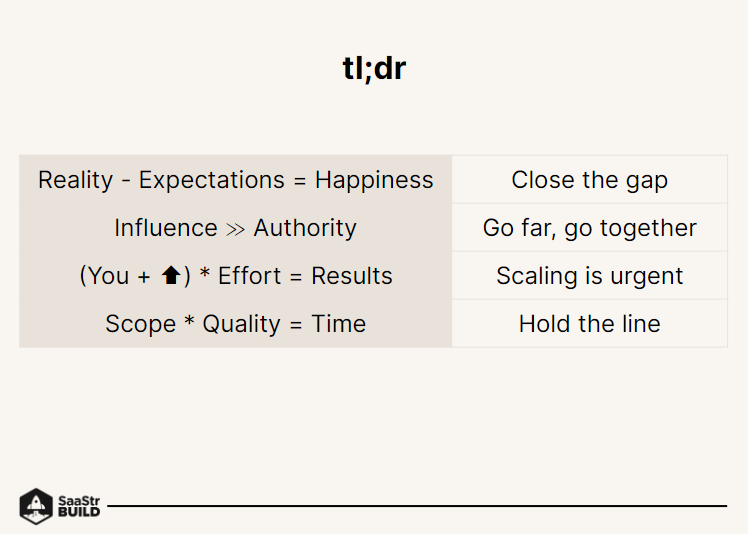When a founder starts a company, they don’t need a product leader. Instead, they bring in engineers, researchers, designers, and data scientists to create the product. When you eventually come in, your job as a product manager is to pull everything together. How can you hit the ground running without causing too much disruption, while also keeping everyone happy?
Notion CPO, Madhu Muthukumar, looks back at his experience leading product teams at top SaaS companies to pull insights on the first 90 days of a product leader.
Understanding and managing expectations
In your first 90 days as a product leader, you must immediately close the gap between people’s expectations and reality.
You come into the job with a set of expectations. You have a new title, and you can’t wait to get started. But your manager also has a set of expectations of what your job should be. They have a set of tasks they want you to do, goals they want you to accomplish. Your ability to deliver these expectations bestowed upon you will impact their happiness with your job performance.
“Everyone’s mental model of what is a product is different.”
As a leader, by definition, you will have a team. And everyone on that team, too, will have various expectations. So, how do you get everyone on the same page? The key is to listen.
Even before you get started on the job, you must sit down with the founders and ask them very specific questions. Ask them: “If a team disagrees with my decision, can you override it?” Or “If you don’t like a candidate and I like them, can I hire them?” People rarely ask these questions upfront because they’re uncomfortable.
Initiate meetings with colleagues across the company to better understand what they think your job should be. This being one of your first touchpoints on the job with your team and colleagues will produce positive results. For one, it gives you a signal of where there is a disconnect between your role, your team, and other teams. This can also inform you if your manager wants something different from you than what your team wants.
Once you know where everyone stands, you can begin making a strategic plan.

Getting started as a product leader
Once your “listening tour” is over, document your thoughts and share them with your colleagues.
You should then write out a 90-day plan, which you will update regularly as you move through it. This plan should also be shared with your colleagues for transparency so that you can begin building trust across the organization.
“It’s important to be able to say you’re going to do something, and then actually do it. That’s a key part of the trust equation.”
Transparency is essential for getting off on the right foot. Part of the reasoning for sharing your plan with everyone is so that people can make you accountable for your work.

Use influence, not authority, to bring change
Product teams are often diverse. We build them to disagree and to dissent, and we build them to have a lot of ownership. And this could pose a big challenge for new product leaders.
As you get started, you need to be mindful of the changes you’re bringing in and how they may disrupt the way different teams work. Bear in mind people’s feelings and expectations, and come alongside them to avoid imposing your authority on them.
Much of your time as a leader will be spent fixing what’s not working, but as you get started, try and spend some time understanding what is working. What’s going well for your team? How can you plug into what they’re already doing?
“Instead of making changes right away, start with what’s working.”
Inevitably, your way of working will shape your team—that’s why you’ve been hired, after all. Though, being mindful of these strategic ways to influence your team will cause less disruption:
- Confidence and charisma. As a leader, you can use your confidence and charisma to try and move a group in your direction. This is about winning over people with your likeability.
- Common goals and motivations. Get rid of the constraints on people by giving them shared goals and driving them in the direction you want them to go. This is not a fast process. It takes time to get everyone on the same page.
- Loyalty and belonging. Leaders should strive to create an environment of belonging. This is about helping people feel like they are truly on the same team, rather than in competition with one another, and more easily able to trust each other. This strategy also takes time, so be patient as you lead those on your team toward greater belonging.
It’s a difficult job to bring people together. As you choose your approach, remember that it should never be about “the leadership vs. the team”, or “product vs. research”.
“You want to go far, and you want to go together.”
The importance of delegation
Leaders often choose not to trust others with important roles and tasks. They will save these tasks for themselves, with the rationale that executing on what’s most important is their most important role. Keeping these essential tasks to yourself, though, will prevent others on your team from learning. It will also keep the burden of execution solely on you.
A strong team consists of multiple people who can work on any number of important tasks to get results, not the other way around.

Your top priorities in the first 90 days
We have addressed the importance of influencing your team in a spirit of transparency and closing the gap between people’s expectations and reality. But how does this translate into your day-to-day job?
There are four things you should prioritize in your first 90 days:
- Scaling. This is the top priority. Anything that you can do to increase scale is the most important use of your time.
- Fixing high-leverage processes. What processes can be streamlined? Identify processes that must be streamlined first, such as hiring processes, and then develop these templates and SOPs. Taking care of these things now will free up more of your time in the future.
- Empowering others to build the company. Let other people help build the organization in the areas that are not in your zone of genius. For instance, delegate the interview process, template designs, and other tasks that you wouldn’t normally delegate.
- Creating a culture of peer development and accountability. Beyond providing feedback to your team, the experts on the ground must be talking to each other. It takes a lot of work, but you want designers coaching designers, product managers coaching product managers, and researchers coaching researchers.
Focus on quality
There are three things that you can track as a leader:
- Scope. What would you like to get done?
- Quality. How well is this work done?
- Time. How long does that take?
Scope multiplied times quality will tell you how much time there is.
Every leader wants scope to go up and time to go down. The variable that will impact both is quality.
“For product leaders, the focus on quality is imperative. It should be an intrinsic part of the culture.”

How can you embed quality into your work as a product leader?
First, set that quality bar high and make it part of the identity of the company. You must do everything you can to make people believe that quality is a variable that does not move. In doing this, you’re going to get higher-quality results.
Second, if you want to save time, the best way is to prioritize the big things. This is not about speeding things out the door or cutting corners at the start. Rather, this is about deciding what you work on and what you don’t work on. Instead of wasting your time figuring out why that feature can’t go out on Friday, spend your time asking the bigger questions such as, “Does that feature need to be built at all?”
Finally, if you choose to optimize, pick the things that are small and repeated as they’re the ones that give back the most. These small optimizations will save you time in the future.
Key takeaways
In your first 90 days as a product leader, set yourself and your team up for success doing these essential onboarding tasks:
- Listen to your people and have a lot of open conversations to close the gap between people’s reality and expectations.
- Aim to go far, but go together with your team, by using your influence and not your authority.
- Prioritize scaling and building your team.
- Hold the line of quality as much as you can.

